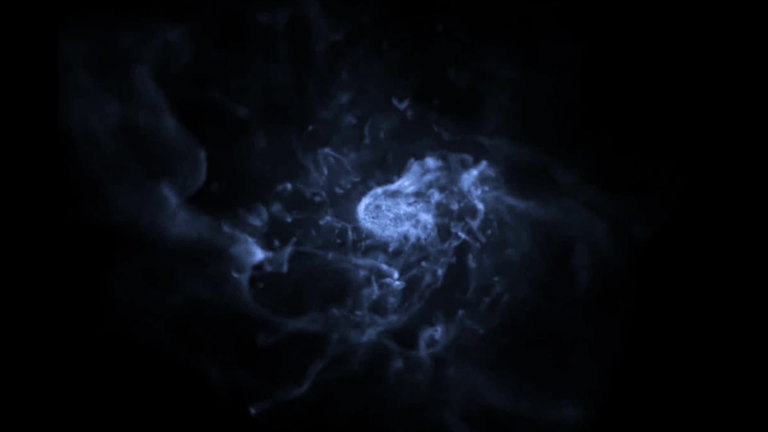For the first time, NASA and ESA's Hubble space telescope has captured a close-up image of a unique galaxy cluster considered to be the largest, hottest, and brightest ever discovered by astronomers. These clusters, which are held together by gravity, are the biggest objects in the distant Universe. They take billions of years to form as smaller groups of galaxies gradually move closer to each other.

The recently photographed cluster, officially known as ACT-CLJ0102-4915, was first discovered in 2012 through observations from ESO's Very Large Telescope, NASA's Chandra X-ray Observatory, and the Atacama Cosmology Telescope. It was found lying approximately 9.7 billion light years away from the Earth.
Discovery of the Galaxy Cluster El Gordo
In 2012, astronomers discovered a cluster of twin galaxies colliding at an unimaginable speed. It was so massive that it earned the nickname El Gordo or "The Fat One.”
At that time, astronomers identified the cluster to consist of two separate galaxies colliding at a speed of millions of kilometers per hour but its origin remains a mystery. Little is still known to this day about such phenomenon, except that it relies heavily on dark matter and dark energy. A rough estimate of its mass was determined but more precise data has only been obtained in 2014 by astronomers using the Hubble.
Data from the Hubble shows the cluster is actually 43 percent more robust than previously thought, with a mass three million billion times more than the Earth's Sun. Because of this, it was given the nickname El Gordo which means "The Fat One" in Spanish.
Astronomers used the space telescope's high-resolution feature to measure the cluster's weak lensing. Such phenomenon occurs when the object's surrounding space is distorted like a funhouse mirror, warping images of background galaxies. The more intense the warping, the more distinct the cluster's mass becomes.
“What I did is basically look at the shapes of the background galaxies that are farther away than the cluster itself,” says James Jee of the University of California at Davis, who served as lead author of the 2014 study. “It's given us an even stronger probability that this is really an amazing system very early in the universe.”
The recent image, according to NASA's report, was taken by the Hubble's Advanced Camera for Surveys and Wide-Field Camera 3 under the observation program called RELICS, which stands for Reionization Lensing Cluster Survey. To date, the program has already photographed 41 massive galaxy clusters with the aim of discovering bright, distant galaxies to be studied by the James Webb Space Telescope which is launching in 2019.
Weak Lensing and the Primitive Galaxy SPT0615-JD
NASA recently used weak lensing to also photograph the embryonic galaxy known as SPT0615-JD, which existed when the Universe was only 500 million years old. Although a few other primitive galaxies have already been found, they only appeared as red dots in captured images because of their small size and immense distance from the Earth.
In the case of SPT0615-JD, however, the foreground galaxy's gravitational field did not only amplify the brightness of the background galaxy but also warped its image into an arc.
“No other candidate galaxy has been found at such a great distance that also gives you the spatial information that this arc image does. By analyzing the effects of gravitational lensing on the image of this galaxy, we can determine its actual size and shape,” says Brett Salmon of the Space Telescope Science Institute in Baltimore.
SPT0615-JD was also identified under RELICS and its partnering S-RELICS Spritzer program. Its discovery was announced on Jan. 11 while the El Gordo's image was released on Jan. 16.
